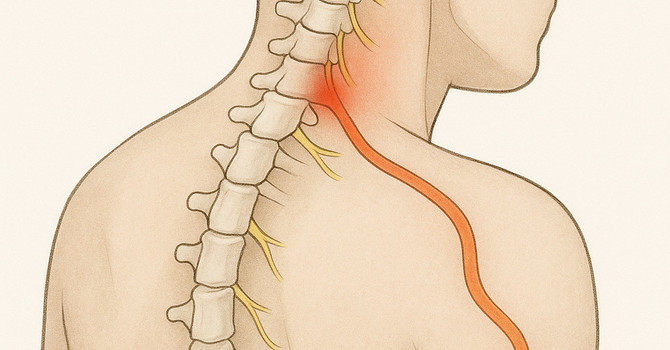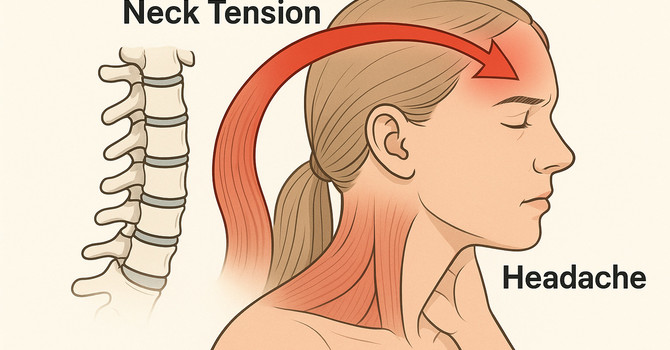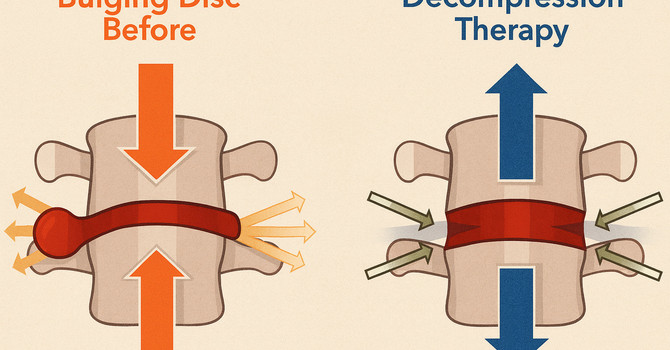What Is a Disc Bulge?
A disc bulge, often referred to in clinical settings as a bulging disc, occurs when one of the soft spinal discs located between the vertebrae begins to extend beyond its usual boundaries. These discs serve as cushions, absorbing shocks to protect the vertebrae and enabling smooth movement. In a healthy spine, discs remain securely in place, but factors like aging, poor posture, repetitive motion, and injury can weaken the outer layers of a disc, causing it to shift or bulge outward.
Disc bulges differ from herniated discs. While both conditions involve a shift in the disc’s structure, herniated discs occur when the gel-like inner material actually breaks through the disc’s outer layer. In contrast, a bulging disc usually involves the entire disc pushing outward, without rupturing the outer shell. This condition can affect any area of the spine but most often impacts the lumbar (lower back) and cervical (neck) regions due to the high mobility and load-bearing functions of these areas. Disc bulges are common, especially in older adults, with some estimates indicating that up to 50% of people over 50 years old have at least one bulging disc, even if they don’t experience symptoms.
Understanding the symptoms of a disc bulge is crucial for managing this condition effectively. Bulging discs can compress nearby nerves, causing pain and discomfort that can interfere with daily life. Studies by the Global Burden of Disease Study, conducted in 2020, reveal that lower back pain is one of the leading causes of disability worldwide, often linked to disc-related issues like bulging and herniated discs. These findings highlight the widespread impact of spinal disc issues on public health and underline the importance of understanding non-surgical treatment options, such as chiropractic care, to alleviate symptoms and restore quality of life. (Source: Global Burden of Disease Study)
Recognizing Symptoms of a Bulging Disc
The symptoms associated with a bulging disc can vary greatly, depending on the disc’s location and the degree to which it presses on surrounding nerves. Many people experience localized pain near the affected disc, with symptoms often more intense in the lower back or neck regions. This pain can radiate outward, traveling to other parts of the body. For example, a bulging disc in the lower back may cause sciatica, with pain radiating down the leg, while a cervical bulging disc may lead to discomfort in the shoulders and arms.
Other symptoms may include tingling sensations and numbness in specific regions of the body served by the compressed nerve, often described as “pins and needles.” Muscle weakness is another common symptom that can make daily tasks more challenging, as the compressed nerves lose their ability to send proper signals to the muscles. Limited mobility is also a frequent result of a bulging disc, making it painful to bend, twist, or carry out simple activities. However, because disc bulge symptoms can mimic those of other conditions, it’s essential for individuals to consult with a healthcare professional, such as a chiropractor, to receive an accurate diagnosis and personalized treatment plan. At Woodroof Chiropractic & Acupuncture, an experienced professional is available to help patients pinpoint the source of their pain and recommend effective treatment options.
Chiropractic Treatment Options for Disc Bulges
Chiropractic care offers a range of non-surgical treatment methods aimed at alleviating pain, restoring mobility, and addressing the root cause of a bulging disc. One of the most common techniques used by chiropractors is spinal adjustment. This treatment involves precise manipulations of the vertebrae to realign the spine, which can reduce pressure on the affected disc and nearby nerves. Adjustments are often carried out with careful and calculated pressure, ensuring the patient’s comfort while promoting movement in restricted areas. A 2018 study published in the European Spine Journal found that spinal manipulative therapy provided significant pain relief and improved functionality in patients with lumbar disc bulges, underscoring the value of chiropractic care for spinal disc issues. (Source: European Spine Journal)
Spinal decompression therapy is another frequently recommended treatment for disc bulges. This approach involves gently stretching the spine, which can relieve pressure on spinal discs and allow them to retract. As the spine elongates, it creates negative pressure within the disc, encouraging fluids, oxygen, and other nutrients to flow into the area, promoting disc rehydration and repair. Many patients report experiencing relief after several sessions, making decompression therapy a popular option for those seeking non-invasive disc treatment.
The flexion-distraction technique is a specialized approach used by chiropractors to relieve pressure on bulging discs. By using a motorized table, chiropractors can perform gentle, rhythmic stretching and decompress the spine, which can ease symptoms and improve mobility. This technique is especially beneficial for lumbar disc bulges, as it targets the lower back where many disc issues are located. Pelvic blocking is another technique commonly employed by chiropractors. In this method, soft wedges are positioned under the pelvis to reposition the spine and reduce nerve pressure. This technique is particularly helpful for those experiencing pain in the lower back and legs, as it targets misalignments that can contribute to sciatic nerve compression.
Benefits of Chiropractic Care for Disc Bulges
Chiropractic care offers several advantages as a treatment approach for disc bulges. Unlike surgical procedures, chiropractic treatments are non-invasive and focus on addressing the condition conservatively, allowing the body to restore its natural alignment and function without requiring incisions or recovery downtime. This makes chiropractic care appealing to those seeking natural, drug-free solutions. By developing personalized care plans, chiropractors take into account each patient’s symptoms, physical condition, and treatment preferences, tailoring the care to meet their specific needs.
Chiropractic care is grounded in a holistic approach that emphasizes treating the root causes of pain rather than simply managing symptoms. The aim is to restore proper alignment to the spine, which can alleviate nerve pressure, improve mobility, and reduce discomfort. Chiropractic treatments have been associated with fewer side effects compared to invasive procedures, making them a safer alternative for patients with disc bulges.
Complementary Therapies and Lifestyle Modifications for Disc Bulges
Alongside chiropractic treatments, certain lifestyle modifications and complementary therapies can significantly enhance spinal health and help prevent future disc issues. For instance, engaging in regular physical activity can strengthen the core and back muscles, which in turn provide better support to the spine. Exercises such as low-impact aerobic exercises, core strengthening routines, and flexibility stretches can aid in reducing stress on the spine. Core exercises specifically help stabilize the lumbar region, which is essential for individuals with lower back disc bulges. Yoga and Pilates are popular choices that help build flexibility and strength, which can alleviate pressure on the discs and prevent further injuries.
Practicing good posture and ergonomics throughout the day can also play a critical role in preventing the aggravation of a bulging disc. Many people spend long hours sitting at desks, which can strain the spine. Using ergonomic office chairs that support spinal curvature, adjusting desk height, and maintaining a straight, upright posture can prevent the additional stress that contributes to disc problems. Chiropractors often provide ergonomic advice as part of their treatment plans to help patients protect their spinal health.
Nutrition also plays a key role in supporting spinal health. Excess body weight places added stress on the spine, so maintaining a healthy weight through balanced nutrition and exercise can help alleviate pressure on spinal discs. Certain nutrients, such as calcium and vitamin D, are essential for bone health, while anti-inflammatory foods can reduce inflammation and support healing. Chiropractors may advise patients on dietary choices that complement their treatment and support their overall spinal wellness.
Frequently Asked Questions About Disc Bulges and Chiropractic Care
Many individuals have questions about how chiropractic care can help with disc bulges and what to expect. One common question is whether chiropractic treatments can worsen a disc bulge. When performed by licensed professionals, chiropractic techniques are designed to reduce nerve pressure and improve spinal alignment, not to exacerbate the condition. At Woodroof Chiropractic & Acupuncture, we take care to customize each treatment, ensuring the safety and effectiveness of their techniques.
The length of time required to experience results from chiropractic care varies from person to person. While some patients experience significant relief within a few sessions, others may need several weeks of consistent treatment to notice substantial improvements. Adhering to the treatment plan and attending regular appointments can optimize results, making it possible to manage symptoms effectively over time.
Some individuals are concerned about potential risks associated with chiropractic treatment for disc bulges. Chiropractic care is generally considered safe when conducted by qualified professionals, but it’s important to choose a chiropractor experienced with disc issues. A chiropractor who understands the complexities of spinal anatomy and the nuances of disc conditions can adapt treatment techniques to ensure that they are both safe and beneficial.
Another frequently asked question is whether a bulging disc can heal on its own. In certain cases, disc bulges may improve over time with rest, physical therapy, and lifestyle modifications. However, persistent or worsening symptoms often require professional intervention to restore comfort and functionality. Chiropractic care offers a conservative approach that can help reduce symptoms and support healing without the need for surgery.
Some people also wonder how they can prevent future disc bulges. Practicing good posture, maintaining an active lifestyle, and following ergonomic principles are all effective ways to reduce strain on the spine. Chiropractors often work with patients to identify habits and lifestyle factors that may contribute to disc issues and offer practical recommendations to promote spinal health.
Exploring chiropractic care for disc bulges allows patients to discover non-surgical treatment options that focus on long-term well-being. Chiropractic treatments such as spinal adjustments, decompression therapy, and guided lifestyle changes provide a path toward relief and improved quality of life. Woodroof Chiropractic & Acupuncture offers a range of personalized treatments for individuals experiencing disc-related discomfort, helping patients move forward with confidence in a safe and supportive environment.
The content in this blog is for informational purposes only and is not a substitute for professional medical advice, diagnosis, or treatment. Always consult your doctor or a qualified healthcare provider before trying new healthcare protocols.
Dr. Ike Woodroof
Contact Me


